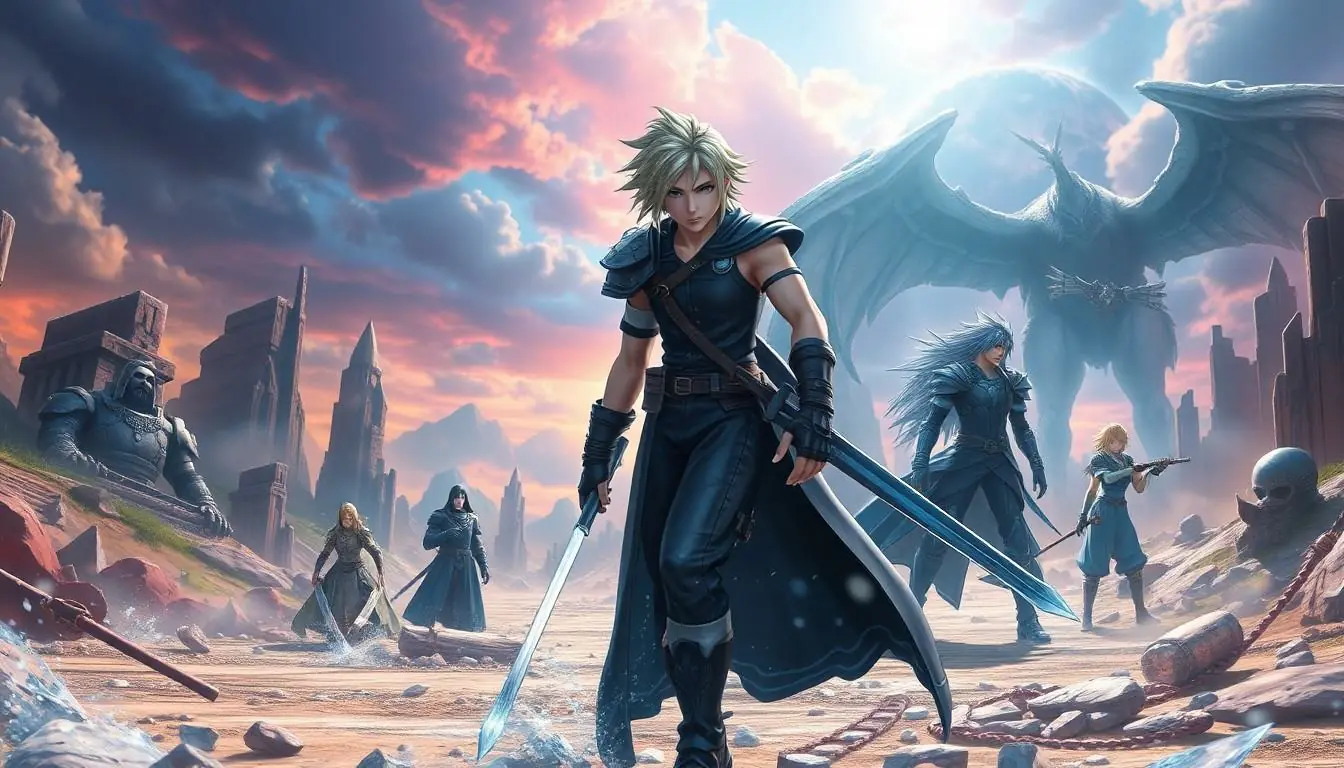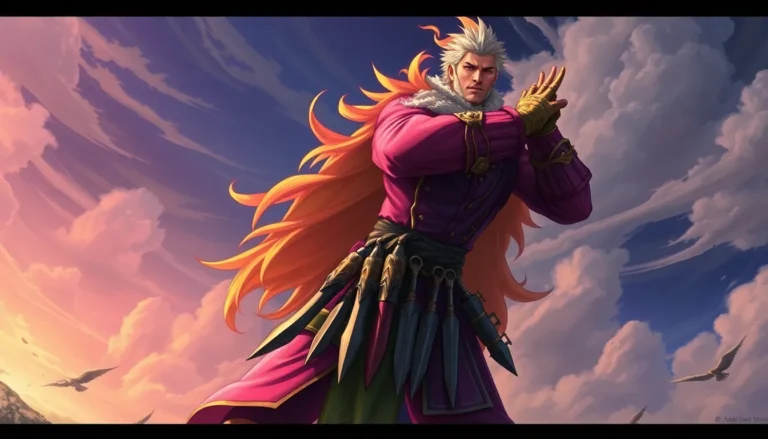Table of Contents
ToggleTetsuya Nomura is a name that resonates deeply within the gaming universe, especially among Final Fantasy fans. With his unique flair for character design and storytelling, he’s crafted worlds that pull players in like a gravity well of nostalgia and excitement. If you’ve ever wondered what makes Nomura’s vision so captivating, you’re in for a treat.
Overview of Tetsuya Nomura’s Work
Tetsuya Nomura’s contributions to the gaming industry prominently feature his role as a character designer and director. His involvement with the Final Fantasy series began with “Final Fantasy VII,” where he crafted iconic characters such as Cloud Strife and Sephiroth. These unforgettable designs played a significant role in shaping the game’s narrative and emotional depth.
Character development stands out in Nomura’s projects. He emphasizes creating compelling backstories that resonate with players. The blend of rich storytelling and striking visuals defines his style, making every character not just a design but a crucial element of gameplay.
In addition to Final Fantasy, Nomura has worked on the “Kingdom Hearts” series. The collaboration of Disney and Square Enix characters within a cohesive universe showcases his ability to merge diverse storytelling elements. The series has garnered a dedicated fanbase, further solidifying his influence in the gaming landscape.
Design innovations represent another hallmark of Nomura’s work. He often experiments with art styles, ensuring each game feels unique while maintaining a recognizable signature. “Final Fantasy XV” exemplifies this approach, featuring a more realistic art style compared to previous entries.
Critics and fans alike recognize Nomura’s contributions as transformative to the RPG genre. His vision not only shapes player experiences but also sets industry standards. By blending artistry with narrative depth, Nomura’s influence continues to guide the future of game design, ensuring his legacy remains integral to gaming culture.
Nomura’s Influence on Final Fantasy
Tetsuya Nomura significantly shapes the Final Fantasy series through his creative vision. His contributions span character design and narrative development, establishing memorable experiences for players.
Character Design Innovations
Nomura’s character designs stand out for their distinctiveness and appeal. He introduced the world to iconic figures like Cloud Strife and Sephiroth, each featuring unique visual elements and intricate backstories. Characters reflect deep emotional struggles and growth, enhancing player connection. Innovative design choices, such as blending realism with stylization, set a new standard in the RPG genre. Every character carries Nomura’s signature flair, making them instantly recognizable and influential in gaming culture.
Storytelling Techniques
Nomura’s storytelling techniques elevate narrative complexity within the series. Each game intricately weaves themes of battle, friendship, and sacrifice, captivating players. Deep character arcs and interwoven plots foster emotional investment. Furthermore, Nomura’s ability to merge diverse storytelling styles, evident in projects like Kingdom Hearts, showcases versatility and engagement. His narratives immerse players in multifaceted worlds, facilitating deeper connections to both characters and overarching plots.
Key Final Fantasy Titles Influenced by Nomura
Tetsuya Nomura’s impact on the Final Fantasy series is profound and far-reaching. His creative vision shaped several key titles, each marking significant advancements in gaming.
Final Fantasy VII
Final Fantasy VII showcases Nomura’s exceptional character design skills. Cloud Strife stands as a memorable protagonist, embodying emotional complexity and personal growth. Nomura’s design of Sephiroth created an unforgettable antagonist that challenges players throughout the game. This title set a new benchmark for RPG narratives, using character-driven storytelling that allows players to connect on deeper levels. Rich backstories enhance character arcs, leading to an engaging and immersive gaming experience. Innovations in graphics complemented Nomura’s designs, transitioning RPGs into a visually stunning realm.
Final Fantasy X
Final Fantasy X introduces the intriguing character of Tidus, who reflects the blend of personal struggle and relational dynamics. Nomura’s work here emphasizes a more realistic art style, shifting away from the stylized approaches of previous entries. Yuna, as the game’s heroine, offers a poignant counterbalance, navigating themes of sacrifice and hope. Her journey, intertwined with Tidus, enhances emotional engagement. Nomura’s attention to detail in character expressions contributes to the game’s ability to evoke attachment. The marriage of gameplay mechanics and design choices showcases Nomura’s evolving artistry in the RPG genre.
Final Fantasy XV
Final Fantasy XV features a modern open-world design driven by Nomura’s vision of camaraderie and exploration. Noctis, as the central character, highlights themes of friendship, loss, and destiny. The bond between Noctis and his companions reflects Nomura’s ongoing commitment to character-centric storytelling. Each character boasts distinct personalities, enriching the narrative fabric of the game. Visual designs present a blend of the fantastical and the realistic, showcasing Nomura’s versatility. This title revitalizes the series while capturing the essence of RPGs, demonstrating Nomura’s enduring influence in game design evolution.
Recent Developments in Nomura’s Projects
Tetsuya Nomura continues to shape the landscape of gaming with his recent projects. “Final Fantasy VII Remake,” released in 2020, brought renewed life to the beloved classic, showcasing enhanced graphics and reimagined gameplay elements. Players praised the deepening of character development, particularly in the portrayal of Cloud and his companions, emphasizing Nomura’s knack for emotional storytelling.
Continuing that legacy, “Final Fantasy XVI” introduces a darker and more mature narrative. Set in a world of political intrigue and warfare, the game features Eikons and Dominants, central to its story. The incorporation of these unique elements signals Nomura’s evolving approach to storytelling, further engaging players through complex character arcs.
His recent work on “Kingdom Hearts IV” exemplifies his commitment to blending rich narratives with beloved characters. The announcement of new worlds to explore, along with the return of iconic characters, excites both fans and newcomers alike. In addition, Nomura’s emphasis on unlimited possibilities in this installment expands the boundaries of the franchise.
Emerging technologies also play a role in Nomura’s projects. Nomura is exploring the use of augmented reality to enhance gameplay experiences, a move that aligns with current industry trends. This forward-thinking strategy positions his projects at the forefront of technology and gaming interaction.
Each of these developments reflects Nomura’s continued dedication to innovation in game design. Strong character connections and intricate storylines drive his vision, making each release highly anticipated. Through the years, he has maintained a unique ability to resonate with players, ensuring the legacy of his work endures.
Conclusion
Tetsuya Nomura’s influence on the Final Fantasy series and the gaming industry as a whole is undeniable. His unique approach to character design and storytelling has set a benchmark that continues to inspire new generations of game developers. The emotional depth and intricate narratives he crafts resonate with fans, creating lasting connections.
As he pushes the boundaries of innovation with projects like the “Final Fantasy VII Remake” and “Final Fantasy XVI,” Nomura’s vision remains at the forefront of gaming culture. His commitment to evolving gameplay experiences ensures that players can expect exciting new adventures in the worlds he creates. The legacy of Nomura’s work is not just a reflection of past achievements but a promise of future possibilities in the realm of interactive storytelling.





